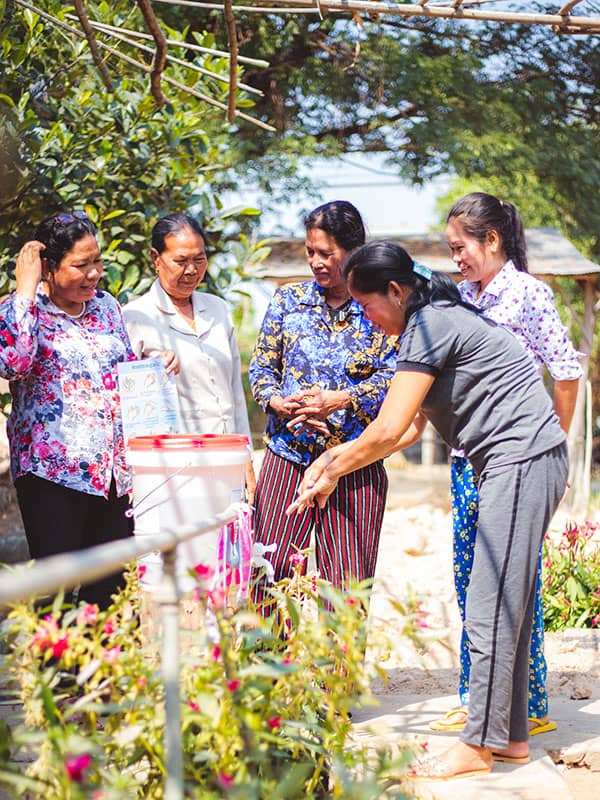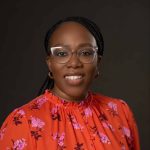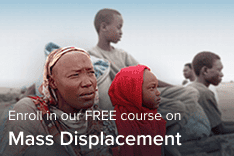When we think about nonprofits and global development, it’s easy to assume that things have always been the way they are, and that the way things are is how they will always be. But the truth is, just like everything else, U.S.-based nonprofit development has an origin story. It has ebbed and flowed and shifted and changed as new learnings and new voices have emerged.
For 80 years, World Relief has been right there in the mix, responding to crises, learning from mistakes and challenges, and creating new programs and solutions that lead to the transformational stories you and I both love to read.
As we move further into this new year and look forward to celebrating World Relief’s 80th birthday this spring, here are three trends we’re seeing in global development and how they’re influencing the work we do today.
1. Growing Complexity of Crises
The crises to which we respond are becoming increasingly complex, with multiple factors compounding to create extensive and difficult-to-address challenges.
We saw this in 2020 when the COVID-19 pandemic showed that a health crisis could bring on economic and social consequences — many of which we are still being addressed today. Likewise, in 2022, we witnessed the devastating ripple effects that one war can have on the world — when Russia invaded Ukraine, food and fuel prices spiked, aggravating a food crisis that affected millions of people all across the globe. And today, in places like Sudan, we’re seeing how political insecurity and persecution in one country can cause people to become displaced and affect host communities in neighboring countries.

2. Increased Awareness That Local is Best
As much as we see the global ramifications for crises happening in individual countries, there is a growing appreciation that only locally-designed and owned solutions will last.
Gone are the days of sitting in offices far away,coming up with program designs and then swooping in to implement them for other people. Today, individuals and communities are echoing “nothing about us without us”, signaling the need for meaningful participation in designing their own solutions.
At World Relief, we have long supported and championed the call for local entities to be agents of their own change. This looks like 95% of our staff in most country offices being national staff who speak the language and understand the cultures of the people they serve.
These are staff like Esther in Haiti and Noah in Kenya — people whose passion and expertise not only strengthen our work but help us build a more just and loving world.
Hear from Noah Sankale Pesi, our Church Empowerment Zone Coordinator in Kajiado, Kenya
It looks like a Church Empowerment Zone, where church leaders and congregations dream together about what holistic transformation may look like in their communities and invite World Relief to support them in carrying this out with technical assistance and training.
And it looks like Afghans and Ukrainians being the ones to serve their communities as translators and cultural ambassadors when new refugees arrive from their home countries.
3. A Robust Understanding of Systems Thinking in Global Development
When we look at complicated crisis events and the local solutions that people want to implement, solutions that last are ones that take a systems approach.
People do not exist in a vacuum — they are located within families, in communities, within states/provinces and under the jurisdiction of some government. Trying to address the issues that one individual faces without understanding the ways the other parts of their context affect them is shortsighted at best, and harmful at worst.
Perhaps this is most clearly illustrated in the way World Relief implements programs to support women’s economic livelihood. When doing so, we also need to consider the gender dynamics that exist within her household and community.
If a woman earns an income, will she be given the opportunity to decide what to do with that income? Or, will increasing her economic standing also increase her vulnerability to intimate partner violence? To improve women’s economic standing, we must go deeper, providing education awareness and services to increase joint financial decision-making in the home and engage the larger community in conversations about peaceful coexistence between men and women.
Or, another example, consider bringing clean water to a community by installing a new borehole. We also have to think about how and where the community will get spare parts to be able to maintain the water point in the local market as well as who has the skills to provide that maintenance.
In such cases, we always look to see how we might liaise with the local government for their buy-in and support on programs that we implement so that their sustainability can be better assured.
Likewise, when refugees are resettled in the U.S., we engage with federal, state and local government entities to plan and map our resettlement numbers so that new arrivals are resettled in locations that have the infrastructure and capacity to welcome those new neighbors.
In other words, a community has enough open jobs where new immigrants can work; a community has accessible by public transit so new neighbors can get to work if they don’t yet have a car; language classes and other services are available; and, perhaps most importantly, the community is made up of kind people to welcome their new neighbors and help them integrate into their new community.
Individuals experiencing vulnerability do not exist in a vacuum. We are all part of a system. The system is either working or it is broken. In order to see local solutions actually solve the multifaceted problems that people face, they need to be situated within an enabling set of systems that function.
Interconnected Crises Need Interconnected Solutions
Over and over again, we are reminded that we live in an interconnected world, and the crises we read about in the news have layered and compounding effects on our neighbors both near and far. At World Relief we want to meet people at their various points of need and are committed to supporting them comprehensively to promote holistic human flourishing.
Stay connected. Sign up for our monthly newsletter to get articles like this delivered straight to your inbox. Or, join this global movement by giving today.

Lanre Williams-Ayedun serves as the Senior Vice President of International Programs at World Relief. As a global development leader with 17 years of experience, Lanre also currently sits on a working group advising the World Bank on the creation of a research agenda related to faith and development. She is a 2022 World Trade Center Institute Emerging and Developing Global Executives (EDGE) fellow, and holds master’s degrees in international development and public health from The George Washington University.

